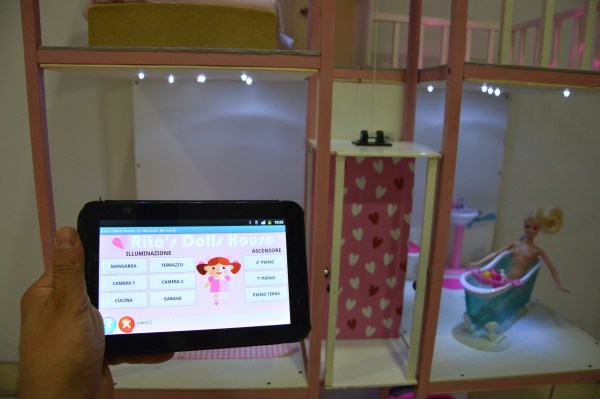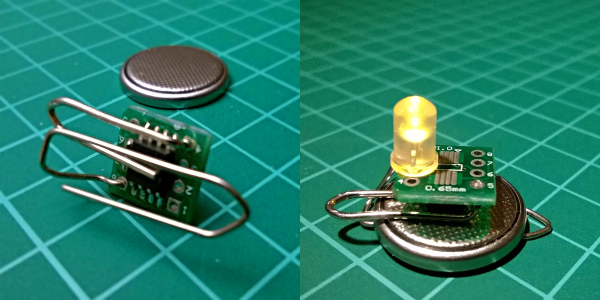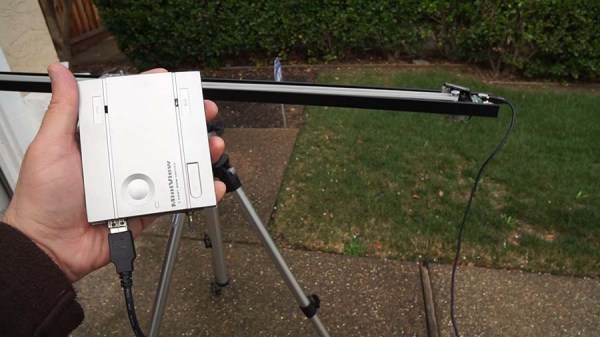Don’t throw those old VGA monitors away, turn them into works of art with [danjovic] and VGA Blinking Lights. This circuit uses a PIC16F688 to generate VGA video. Not just a random spray of monochrome dots either. VGA Blinking Lights puts up an ever-changing display of 48 colored squares.
 Originally created for the square inch contest, VGA Blinking Lights could hide behind a quarter. [Danjovic] dusted his project off and entered it in The 1 kB Challenge. The code is written in PIC assembly. The final hex used to generate the squares clocks in at 471 words. Since the PIC uses a 14 bit word, that’s just over 824 bytes. Plenty of space for feature creep!
Originally created for the square inch contest, VGA Blinking Lights could hide behind a quarter. [Danjovic] dusted his project off and entered it in The 1 kB Challenge. The code is written in PIC assembly. The final hex used to generate the squares clocks in at 471 words. Since the PIC uses a 14 bit word, that’s just over 824 bytes. Plenty of space for feature creep!
Video is generated with a twist on the R2R DAC. [Danjovic] tweaked the resistor values a bit to obtain the correct voltage levels for the VGA standard. The color of the squares themselves are random, generated using a Galois Linear Feedback Shift Register (LFSR).
With only a handful of components, and a BOM cost under $5, this would be a fun evening project for any hardware hacker.

If you have a cool project in mind, there is still plenty of time to enter the 1 kB Challenge! Deadline is January 5, so check it out and fire up your assemblers!


















